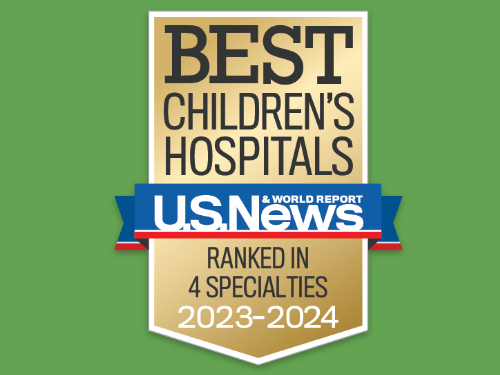The surgery is necessary in an infant who has craniosynostosis when the bones of the skull fuse together, or a craniofacial syndrome which causes fusion of the bones of the head and also abnormalities of the skull and face.
Surgery should be done within the first two weeks of life on those infants born with multiple fused sutures involved. When any of the other sutures are involved, surgery is done prior to 3 months of age when a less invasive microscopic procedure can be employed. In older children, the standard approach is employed at 6 months of age. For fusion of the remaining sutures, surgery is done at six months.
Most children who have single suture involvement require only one surgical procedure. However, for those with multiple suture involvement and those with craniofacial abnormalities associated with the craniosynostosis, multiple procedures are necessary.
For healthy children with no other major medical problems, the risks are minimal. The major concern during surgery is blood loss because an infant's blood volume is low and the loss of a small amount may require replacement.
In those who have craniosynostosis or a craniofacial syndrome, there is a small group of 7% to 14% who have increased intracranial pressure which may result in brain damage if not treated.
Children with craniosynostosis, craniofacial syndromes, and positional deformities may have problems with their eyes and ears. Those with craniosynostosis and positional deformities have trouble with vision as a result of an imbalance of their ocular muscles. Children with craniofacial syndromes have problems with their ears and eyes and often have a history of ear abnormalities in conjunction with the bulging of the eyes and corneal exposure problems.
The plastic surgeon reconstructs the facial deformity and the neurosurgeon is primarily involved with the cranial deformity. The combined expertise of the plastic surgeon and neurosurgeon yields optimal results.
In infants with craniosynostosis and positional deformities, there is no evidence of genetic transmission. In infants who have abnormal head shape from craniofacial syndromes, there is a history of genetic transmission.
The only visible scar is the scar in the hairline, which is usually covered nicely as the hair grows and the child ages.
As a parent, you will need to keep your child's suture line clean. This involves removing all crusts with peroxide and antibiotic ointment and shampooing the infant's hair with baby shampoo.
Contact Us
If you have any questions, use the online tool below to help us connect with you. To refer a patient or schedule an appointment, please contact our clinic using the information below.
- Pediatric Neurosurgery Clinic
UT Professional Building
6410 Fannin, Suite 950
Houston, TX 77030
P: (832) 325-7242
F: (713) 512-2221 - Pediatric Neurosurgery Clinic – Memorial City
915 Gessner Rd #300
Houston, TX 77024
P: (832) 325-7234
F: 713-512-2221 - Texas Cleft-Craniofacial Team and Pediatric Plastic Surgery Clinic
6410 Fannin Street, Suite 950
Houston, TX 77030
Plastic & Reconstructive Surgery Clinic: (832) 325-7234
Texas Cleft-Craniofacial Team: (713) 500-7302
Vascular Anomalies Team: (832) 325-7234
Office Hours: 8:00 a.m. to 5:00 p.m. (Monday-Friday except major holidays)
To contact Children's Memorial Hermann Hospital, please fill out the form below.
